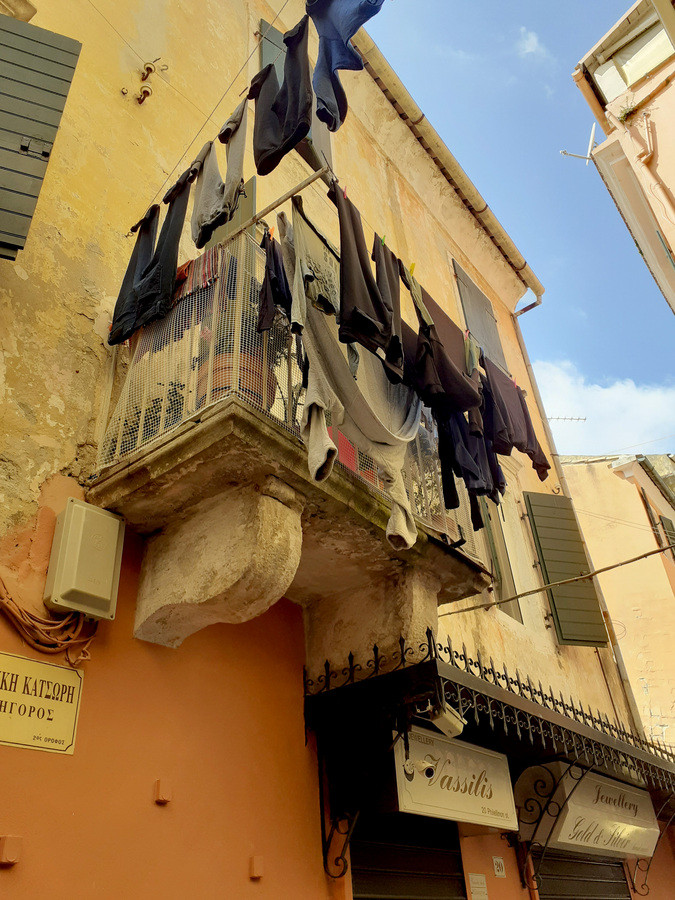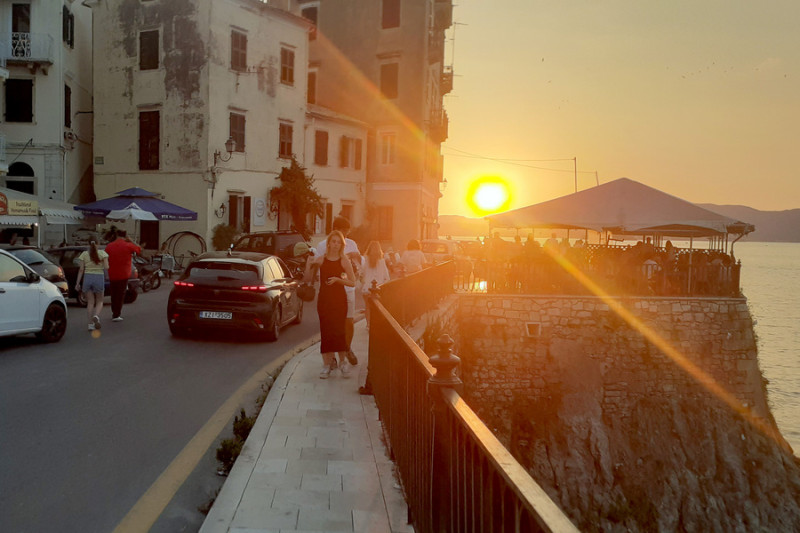The Campiello in the city of Corfu, undoubtedly a point of reference in its historic center, is a living witness of another era
The images come from past centuries. Narrow winding alleys, high-rise buildings, mansions with ornate doors, small squares, holy temples, Orthodox monuments. The Campiello in the city of Corfu, undoubtedly a point of reference in its historical center, is a living witness of another era.
It is the district with the great historical route, one of the oldest in the city, which in recent years has emerged as a much-photographed tourist choice. For the people of Corfu, life there, among the cantons, is a familiar daily routine, but for the visitor, the senses awaken the imagination. Campiello is the exact imprint of the Venetian rule on the island.
The district of Campiello is located on a hill, northeast of the city. As historical researcher Gerasimos Dimoulas explains to APE-MPE, the name of the district comes from the time of the Venetians. The word Campiello in Italian means a small square with a tank or well, like the Campiello Angarao, which existed in Venice before 1332.
According to archives and historical sources, the district was created when the medieval city of Corfu began to expand, outside the walls of the old fortress. Apparently, the district is located on a rocky elevated point above the sea, for security reasons at that time. On top of the rock initially, small squares were formed and then the multi-storey buildings were built, with the untouched until today, Venetian architecture.
A report from 1462 refers to the neighborhood as the Jewish mountain or the mountain of the Jews and from the historical research, it seems that for a long time until the 16th century, Jews had their homes there.
Inside the labyrinthine narrow streets, the cantons, in Campiello, there are old mansions, such as that of the Bizi family in the alley of the same name. The mansion has an elaborate stone arched entrance, embossed with the family coat of arms.
In Kampielos, on the sea side, is the Kapodistria Mansion and the house where our national poet Dionysios Solomos lived for many years and wrote The Free Besiegers. In the adjacent strait, since the 15th century, the holy church of the Most Holy Theotokos of Antivouniotissa, which functions as a museum, and also the Metropolitan Church of Corfu, which was erected in 1577, has stood unshaken.
An example of Venetian architecture, it is also the building of the Reading Society, the first intellectual institution in Greece, founded in 1836.
Following the uphill road from the Reading Society, we enter the picturesque cantonments of the district. An arch between the houses is impressive. The people of Corfu call it the “Volto of Kokkini”, because there was the residence of the aristocratic family of the same name, which originated from Byzantium.
In fact, the noble Antonios Kokkinis donated in 1699 to the people of Corfu, the “Venetian well”, the cistern of Kremastis. The cistern is located in the heart of Campiello and is an architectural monument next to the church of the Most Holy Theotokos. In every corner of the district you will discover religious monuments. After climbing a large “staircase”, you will come across the Holy Church of Saint Nicholas of the Elders, San Nicolo dei Vecchi, while then wandering through the cantons will lead you to the Square of the Brigades and the Holy Church of Pantokrator.
Campiello has an Italian character. Many liken it to the neighborhoods of Venice, those behind the canals, or to cities in the Italian south. What is certain is that wandering through its cantonments is magical. It is a journey, to the past and present of a welcoming place.
Source :Skai
I am Frederick Tuttle, who works in 247 News Agency as an author and mostly cover entertainment news. I have worked in this industry for 10 years and have gained a lot of experience. I am a very hard worker and always strive to get the best out of my work. I am also very passionate about my work and always try to keep up with the latest news and trends.













